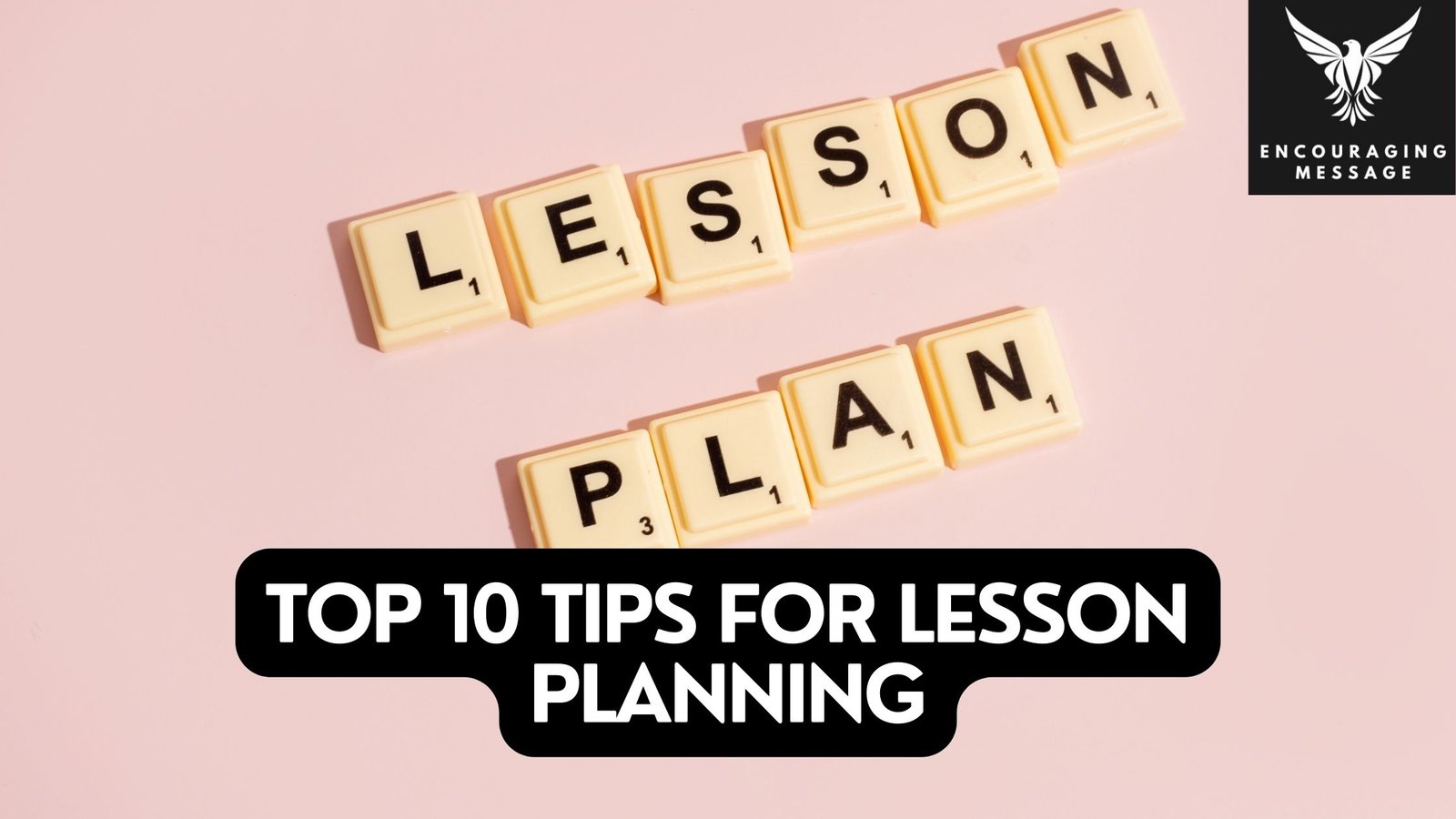Lesson planning is a fundamental aspect of effective teaching that sets the stage for student engagement, understanding, and success. As educators, we know that a well-thought-out lesson plan is the key to a productive and enriching learning experience. The top 10 tips for lesson planning, equipping you with strategies to create dynamic and impactful lessons that resonate with your students.
Crafting Effective Lessons : Unveiling the Top 10 Tips for Lesson Planning Excellence
Embarking on the journey of lesson planning is akin to weaving the intricate threads of education into a tapestry that engages, inspires, and enlightens. Whether you’re a seasoned educator or a fresh face in the world of teaching, the art of lesson planning is a skill that continuously evolves, demanding creativity, adaptability, and a touch of pedagogical finesse.
In this blog post, we delve into the heart of effective teaching strategies, unveiling the Top 10 Tips for Lesson Planning. Each tip serves as a beacon, guiding educators through the maze of curriculum design, student engagement, and instructional delivery. Whether you’re striving to create captivating lessons that resonate with your students or seeking innovative ways to enhance your teaching toolkit, these invaluable insights are designed to elevate your lesson planning prowess.
From fostering a learner-centric approach to integrating technology seamlessly, we’ll explore the key elements that make a lesson not just a curriculum checkpoint, but a transformative experience for both teachers and students alike. Join us on this expedition into the realm of pedagogy, as we uncover the secrets to crafting lessons that leave an indelible mark on the minds of learners and make the journey of education truly extraordinary.
Here Are Top 10 Tips for Lesson Planning :
Understand Your Audience :
Tailor your lessons to the unique needs, interests, and learning styles of your students. Consider their prior knowledge and experiences, ensuring that your lesson content is both relatable and challenging. Personalizing lessons fosters a more engaging and inclusive learning environment.
Define Clear Objectives :
Start your lesson planning process by clearly defining your objectives. What do you want your students to learn and achieve by the end of the lesson? Objectives should be specific, measurable, achievable, relevant, and time-bound (SMART) to guide your planning effectively.
Establish a Real-World Connection :
Relate lesson content to real-world scenarios to demonstrate the practical application of concepts. When students can see the relevance of what they’re learning, it not only deepens their understanding but also sparks their curiosity and enthusiasm.
Incorporate Varied Activities :
Keep your students engaged by incorporating a variety of activities within your lesson plan. Mix lectures, discussions, group work, hands-on activities, and multimedia resources to cater to different learning preferences and maintain a dynamic classroom atmosphere.
Utilize Technology Wisely :
Leverage technology to enhance your lessons, but do so thoughtfully. Integrating interactive tools, educational apps, or multimedia presentations can create a more interactive and immersive learning experience. However, always ensure that technology enhances, rather than distracts from, the learning objectives.
Create a Flexible Lesson Structure :
While planning is crucial, be prepared to adapt. Flexibility is key, especially when unexpected challenges or opportunities arise. A flexible lesson plan allows you to make on-the-spot adjustments to meet the evolving needs of your students.
Consider Differentiation :
Recognize and accommodate the diverse needs of your students through differentiation. Provide options for different ability levels, learning styles, and interests. This ensures that every student has the opportunity to succeed and grow in their understanding.
Encourage Student Reflection :
Foster a culture of reflection by incorporating opportunities for students to assess their own learning. This can be achieved through self-assessment, peer feedback, or journaling. Reflection not only reinforces learning but also promotes metacognitive skills.
Incorporate Assessment Strategies :
Integrate assessment seamlessly into your lesson plan to gauge student understanding and progress. Use a mix of formative and summative assessments to provide ongoing feedback and identify areas for improvement. Assessments should align with your defined objectives.
Seek Continuous Improvement :
Reflect on your teaching practices and the effectiveness of your lesson plans regularly. Embrace feedback from students, colleagues, and self-reflection to refine and improve your approach. Continuous improvement is a hallmark of effective teaching.
Final Thoughts :
In the realm of education, lesson planning is an art that evolves with experience and dedication. By incorporating these top 10 tips for lesson planning process, you can create an enriching and transformative learning experience for your students. Remember, the heart of effective teaching lies in the ability to adapt, innovate, and inspire, and a well-crafted lesson plan is the cornerstone of that journey. Happy teaching!
Read More -:
- Tips For Good Sleep
- Tips for Studying
- Tips for Healthy Living
- Tips for Good Health and Wellbeing
- Tips for a Successful Job Interview
- Tips For Personality Development For Students
- Tips for Effective Communication
- Tips for Strategic Thinking
- Tips For Time Management
- Tips For Effective Speaking
- Tips for Writing Effective Speeches
- Tips to Train Your Mind Towards Positive Thinking
